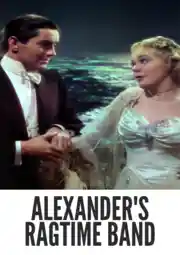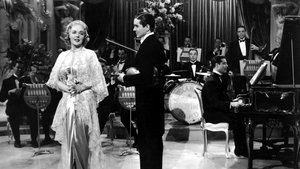Contact: [email protected]
Video Sources 0 Views

Synopsis
[ez-toc]




Introduction
In the ever-evolving world of cinema, the debate over colorizing old films has been a topic of contention. Some argue that the original black and white format preserves the authenticity of a bygone era, while others believe that adding color breathes new life into these classics, making them more accessible to modern audiences. As a film reviewer and editor, I delve into the heart of this debate with a close look at “Witness to Alexander’s Ragtime Band Colorized 1938.” This film, a product of the colorization process, offers a unique perspective on a beloved classic, inviting us to reevaluate the merits of bringing vintage films into vibrant hues.
Read Media File Transfer Agreement: Terms and Conditions
Read FAQ
Bringing a Classic to Life: Alexander’s Ragtime Band Colorized (1938)
“Alexander’s Ragtime Band Colorized,” released in 1938, stands as a testament to the Golden Age of Hollywood. Directed by Henry King, this musical film boasts the brilliance of legendary composer Irving Berlin and features a stellar cast, including Tyrone Power and Alice Faye. The narrative revolves around Roger Grant, played by Power, as he forms a jazz band and navigates the romantic entanglements within. The film encapsulates the essence of the Jazz Age and the cultural vibrancy that defined the era.
The decision to colorize “Alexander’s Ragtime Band Colorized” was a bold one, considering the film’s place in cinematic history. The colorization process aimed to breathe new life into the movie, making it more appealing to contemporary audiences accustomed to the vibrancy of modern cinema. The meticulous approach taken in colorizing this classic raises questions about the advantages and disadvantages of experiencing it in color.
Reviving Characters and Storylines in Full Spectrum
At the core of “Alexander’s Ragtime Band Colorized” are its captivating characters and intricate storylines. Tyrone Power’s portrayal of Roger Grant is a standout performance, capturing the charisma and passion of a musician on the rise. The supporting cast, including Alice Faye and other notable actors, adds depth to the film’s narrative.
Colorization, when done tastefully, enhances the storytelling elements of the movie. It breathes life into the costumes, sets, and surroundings, providing a visual richness that complements the emotional depth of the characters. Witnessing the romantic entanglements and dramatic twists in vibrant hues adds a layer of immediacy to the viewing experience, drawing the audience into the world of “Alexander’s Ragtime Band Colorized” with renewed intensity.
The Melodic Brilliance: Music and Jazz in Vibrant Hues
No discussion of “Alexander’s Ragtime Band Colorized” would be complete without highlighting its musical brilliance. The film’s soundtrack, infused with jazz influences, serves as a time capsule of the musical landscape of the 1930s. Irving Berlin’s contributions to the film’s musicality are undeniable, with iconic tunes that continue to resonate with audiences.
In the colorized version, the musical sequences take on a new dimension. The vibrant hues add an extra layer of energy to the dance numbers and performances, amplifying the joy and exuberance of the Jazz Age. The brilliance of Berlin’s compositions is heightened, creating a more immersive and emotionally resonant experience for viewers.
Recontextualizing History through Color: World War I and the Jazz Age
“Alexander’s Ragtime Band Colorized” is not just a musical romance; it also intertwines with the historical backdrop of World War I. The film provides a snapshot of the era, capturing the spirit of resilience and camaraderie during challenging times. The portrayal of the Jazz Age is a cultural homage to an epoch defined by social and artistic revolutions.
Colorization, in this context, adds depth to the historical narrative. It allows audiences to visually connect with the past, bridging the gap between then and now. The vivid depiction of the Jazz Age serves as a visual time machine, transporting viewers to a bygone era and offering a fresh perspective on the cultural significance of the times.
Controversies, Visionary Direction, and Audience Reception
As with many creative endeavors, the colorization of “Alexander’s Ragtime Band Colorized” was not without its controversies. Rumors of a plagiarism lawsuit surrounding the film’s production stirred the waters, adding an unexpected layer of drama to its legacy. While the controversy may have fueled curiosity, it is essential to separate the legal wrangling from the artistic achievements of the film.
Director Henry King’s vision for both the original and colorized versions of the movie is worth exploring. Did the colorization process align with the director’s creative intentions, or did it diverge into a different artistic realm? Analyzing the director’s choices sheds light on the evolution of the film and the challenges faced in updating a classic for a new audience.
Audience reception to “Alexander’s Ragtime Band Colorized 1938” was, unsurprisingly, mixed. Some embraced the vivid palette and enhanced visual experience, praising the film for its renewed vitality. Others, however, clung to the authenticity of the original black and white presentation, viewing colorization as a departure from the intended aesthetic.
Over time, the movie’s legacy has evolved. While purists may initially resist change, subsequent generations may come to appreciate the colorized version as a gateway to the past, offering a unique blend of nostalgia and modernity.
Preserving the Magic of a Colorized Classic
In the world of film preservation, the importance of safeguarding colorized musicals like “Alexander’s Ragtime Band Colorized” cannot be overstated. As technology advances, ensuring that these classics are accessible to future generations becomes a critical mission. The colorized version, in particular, serves as a bridge between the past and present, allowing younger audiences to connect with the cultural richness of an era long gone.
Preserving the magic of a colorized classic involves not only safeguarding the visual elements but also maintaining the integrity of the storytelling and musicality. Restorations must be approached with a delicate balance, respecting the original intent while adapting to contemporary viewing preferences.
The Debate Continues: Authenticity versus Enhanced Viewing Experience
The ongoing debate surrounding the authenticity of film restoration versus the enhanced viewing experience persists. Purists argue that altering the original presentation compromises the artistic integrity of the filmmakers. On the other hand, proponents of colorization contend that it breathes new life into old classics, making them more engaging for modern audiences.
The key lies in finding a middle ground that respects the intentions of the filmmakers while acknowledging the evolving tastes and preferences of contemporary viewers. By offering both the original and colorized versions, film enthusiasts can choose the experience that resonates most with them. This approach ensures that the essence of the classic remains intact while embracing the possibilities that technology provides.
Conclusion
In the kaleidoscopic world of cinema, the colorization of old films like “Witness to Alexander’s Ragtime Band Colorized 1938” adds a new layer of intrigue to the ongoing conversation. As a film reviewer and editor, my exploration of this classic unveiled a tapestry of music, romance, and historical resonance, all brought to life in vibrant hues.
In conclusion, I encourage readers to explore both the original and colorized versions of classic films, appreciating them as distinct but valuable pieces of cinematic history. The debate over authenticity versus enhanced viewing experience may persist, but the true magic lies in the ability of these timeless classics to transcend the boundaries of time and color, captivating audiences across generations. Whether in black and white or a spectrum of colors, the enduring appeal of films like “Alexander’s Ragtime Band” remains a testament to the everlasting enchantment of the silver screen.













